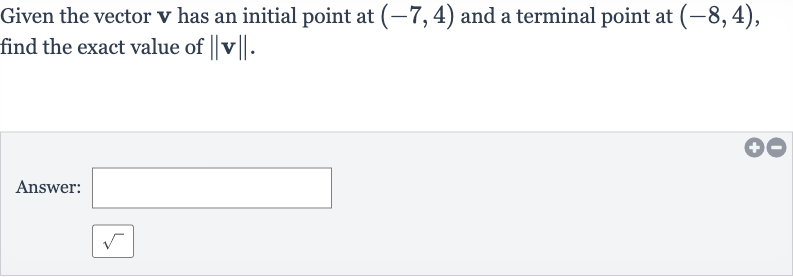AI tutor
Welcome to Bytelearn!
Let’s check out your problem:

Given the vector has an initial point at and a terminal point at , find the exact value of .Answer:
Full solution
Q. Given the vector has an initial point at and a terminal point at , find the exact value of .Answer:
- Define Magnitude of Vector: To find the magnitude of vector , we need to calculate the difference between the terminal and initial points in both the and directions. The magnitude of a vector , denoted as , is given by the formula , where is the change in the -coordinate and is the change in the -coordinate.
- Calculate : Calculate , which is the change in the x-coordinate. .
- Calculate : Calculate , which is the change in the y-coordinate. .
- Calculate Magnitude: Now, we can calculate the magnitude of vector using the formula . Substituting the values we found, .
- Final Result: The square root of is . Therefore, the magnitude of vector is .
More problems from Transformations of absolute value functions: translations and reflections
QuestionGet tutor help
QuestionGet tutor help
QuestionGet tutor help
QuestionGet tutor help
QuestionGet tutor help
QuestionGet tutor help
QuestionGet tutor help
QuestionGet tutor help
QuestionGet tutor help
